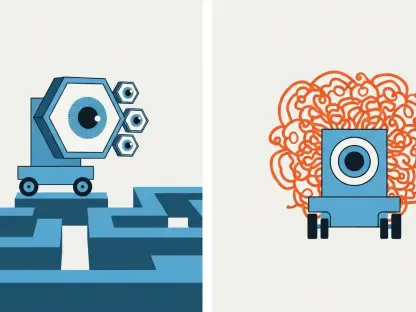I’m thrilled to sit down with Laurent Giraid, a renowned technologist whose groundbreaking work in artificial intelligence has reshaped how we think about technology in education. With a focus on machine learning, natural language processing, and the ethical implications of AI, Laurent brings a wealth of insight into how tools like ChatGPT can transform learning environments. In this conversation, we dive into the innovative Study Mode feature recently introduced by OpenAI, exploring how it redefines student interaction with AI through guided learning, the research behind its design, its impact on academic confidence, and the future of AI in education amidst a competitive landscape.
Can you share what sparked the idea behind creating Study Mode for ChatGPT?
The inspiration for Study Mode came from observing how students and educators were already using ChatGPT, often in ways that didn’t fully support deep learning. We noticed a trend where many users treated AI as a quick answer tool, which could undermine critical thinking skills. By engaging with the education community, we learned about the need for a feature that acts more like a tutor than a search engine, encouraging students to work through problems step by step. It was about shifting the focus from getting answers to building understanding.
How does Study Mode stand out from the standard ChatGPT experience when it comes to academic support?
Unlike the standard mode, which often delivers detailed, direct responses, Study Mode prioritizes a conversational approach rooted in Socratic questioning. It’s designed to guide rather than tell. For instance, if a student asks about a complex topic like game theory, instead of a long explanation, Study Mode might ask about their current understanding or goals, then tailor the guidance accordingly. This method helps students build on their knowledge incrementally, fostering a deeper grasp of the material.
What kind of collaborative efforts went into shaping Study Mode’s design?
The development process was highly collaborative, involving pedagogy experts from over 40 institutions worldwide. Their insights were crucial in crafting a tool that aligns with educational principles, ensuring it supports genuine learning rather than shortcuts. We focused on creating custom system instructions that could adapt to different learning styles, and the feedback from these experts helped refine how the AI prompts students to think critically at every step.
How does Study Mode personalize its guidance to match a student’s skill level?
Personalization is at the heart of Study Mode. It starts by asking probing questions to gauge where a student stands on a topic—like their familiarity with concepts or specific areas of confusion. Based on the responses, it adjusts the complexity of follow-up prompts to keep the learning challenging yet achievable. This dynamic calibration ensures that students aren’t overwhelmed or bored, maintaining an optimal learning zone.
What happens when students push for quick answers instead of engaging with the learning process in Study Mode?
We anticipated that some students might try to bypass the guided approach, so Study Mode is designed to gently push back. If someone insists on just getting the answer, the system reminds them that the goal is to learn, not to shortcut. This nudge is rooted in the belief that persistence in problem-solving builds confidence and skills over time. Early testing showed that many students adapted to this approach, often appreciating the reminder to focus on understanding.
Feedback from early testers has been overwhelmingly positive. What student experiences or insights stood out to you during the development of Study Mode?
Hearing from students about how Study Mode boosted their confidence was incredibly rewarding. Many shared how it helped them tackle concepts they’d struggled with for ages, like complex computer science topics or accounting principles. What struck me most was their sense of empowerment—feeling like a learning partner was beside them, ensuring they were ready before moving forward. These stories drove us to fine-tune the feature to make it even more supportive and intuitive.
With other major players entering the educational AI space, how do you see Study Mode carving out its own niche?
The education AI market is indeed getting crowded, but I believe Study Mode stands out through its unwavering focus on learner-led interaction. Our emphasis on Socratic questioning and scaffolding—building knowledge step by step—sets it apart from tools that might lean more on convenience. We’re also committed to iterating based on real student feedback, which keeps us aligned with actual classroom needs rather than just market trends.
What is your forecast for the future of AI-powered learning tools like Study Mode?
I think we’re just at the beginning of what AI can do for education. In the coming years, I expect tools like Study Mode to become even more integrated into learning environments, offering deeper personalization, better visualizations for complex ideas, and seamless tracking of progress over time. The challenge will be balancing innovation with ethical considerations, ensuring these tools enhance critical thinking rather than replace it. If we get that right, AI could truly democratize education, making high-quality learning support accessible to everyone, everywhere.









